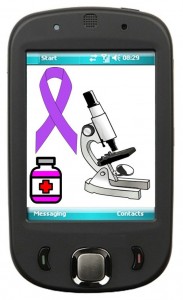This scientific research has also connected the devices to skin irritation, headache, and fatigue.
According to the findings of a new study that was published in the Electromagnetic Biology & Medicine journal, the radio frequency radiation that is emitted by wireless and mobile technology is linked to certain kinds of cancers and other health risks.
This study adds a considerable piece of evidence to claims that have long been made about cell phone risks.
Until now, there have been a few studies that have suggested that mobile technology is not linked to cancer, and there have been a few that have indeed linked the two. This has meant that stating that cell phone use can cause cancer was considered to be speculation, until now. This latest research has contributed a significant component to the argument that there are health risks associated with the radiation from mobile tech.
The scientists in the study claimed that mobile technology radiation can cause metabolic imbalances.
 These imbalances to the metabolism that result from proximity and/or use of mobile devices and other wireless gadgets, are what is linked to the development of cancer as well as neurodegenerative diseases, skin rashes, headaches, and other issues.
These imbalances to the metabolism that result from proximity and/or use of mobile devices and other wireless gadgets, are what is linked to the development of cancer as well as neurodegenerative diseases, skin rashes, headaches, and other issues.
The researchers stated that the radiofrequency radiation (RFR) exposure leads to oxidative stress that can cause more minor irritations such as skin problems, fatigue, headache, and others, or more severe medical problems such as cancers. This was determined to be a risk when the mobile device or devices are used for long periods of time.
The research was conducted by a team at the National University for Food Technologies of Ukraine. Study co-author and researcher, Igor Yakymenko, examined living cells and the impact of low-intensity RFR on cellular metabolism. He explained that “These data are a clear sign of the real risks this kind of radiation poses for human health,” adding that “ROS are often produced in cells due to aggressive environments, and can also be provoked by ordinary wireless radiation.”
The study suggested that mobile technology owners take a more precautionary approach to their device use.

 Social and medical research studies are consistently saying that the increase in the use of smartphones for texting, surfing the web, checking email, tweeting, posting on Facebook, and taking pictures, as opposed to actually speaking with friends, family, and businesses, has its drawbacks. This body of evidence is continuing to grow and is suggesting that there are a number of social and communication disadvantages linked with a reduction in spoken communication instead of text based discussions.
Social and medical research studies are consistently saying that the increase in the use of smartphones for texting, surfing the web, checking email, tweeting, posting on Facebook, and taking pictures, as opposed to actually speaking with friends, family, and businesses, has its drawbacks. This body of evidence is continuing to grow and is suggesting that there are a number of social and communication disadvantages linked with a reduction in spoken communication instead of text based discussions.